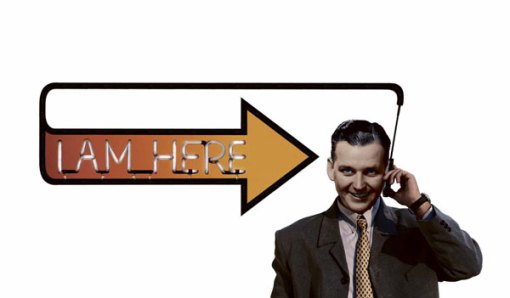Going beyond the interface. This technology, which now seems even more feasible, has tremendous implications on the future of HCI (human computer interaction). It may not be apparent how this technology may be used in conjunction with what we now call a mobile device but by the time this becomes mainstream a series of other technologies will give rise to products we cant yet imagine. This technology, in the long term, potentially renders the need to carry any type of device with you unnecessary. In the future, this type of device could be considered the replacement of what we think of today as a mobile communications device. On the flip side opening up an interface where Big brother can potentially read peoples emotions or thoughts might not seem so much like a good idea or science fiction after all.
Could you plug your phone directly into your brain?
15 05 2009Comments : Leave a Comment »
Categories : interactive, Media, presentations, R&D, technology, UI, Uncategorized, Users
Next step in tactile feedback research & development for touch screen UIs
14 05 2009In the search for the holly grail of touch interfaces this concept takes the search for a solution to the tactile feedback problem a step further. The physical feedback on this touch enabled display uses a technique that is reminiscent of the air pockets introduced by the sneaker industry decades ago. It yet remains to be seen if this idea will take off for a number of reasons like: feasibility and cost of production, the actual user experience, endurance to daily wear and tear as well as power consumption. The main threat to this technology might be its time to market. If nanotechnology R&D produces haptic diplays (deformable touch screen surfaces) which can be produced cheaply and in large numbers in the short to medium term, this and other technologies will be put to rest just like a myriad other seemingly good ideas in years past.
From: Wired Gadget Lab
Vodpod videos no longer available.
Comments : Leave a Comment »
Categories : articles, interactive, mobile, R&D, technology, UI, Users
Intel’s live augmented reality demo @ Web 2.0 Summit 2008
24 03 2009It seems that augmented reality will be reaching us soon after all.
This is a presentation by Paul Otellini on what WEB 2.0 means for Intel. It is very interesting that a major part of his presentation involves demonstrating an augmented reality application that runs on a mobile device. From a user perspective, augmented reality is probably the best way to truly mix the web into our surroundings.
The processing power required to run such a device is similar to today’s high end desktop workstations. When, not if, Intel brings to market the required processing power combined with extended battery life, these types of application will offer a breadth of new communication opportunities for users.
from: A Conversation with Paul Otellini
Vodpod videos no longer available.

Comments : Leave a Comment »
Categories : interactive, Media, mobile, presentations, R&D, technology, Users
Nanotechnology concepts for mobile devices
24 03 2009This is a video of ‘The Morph Concept’ from Nokia. It demonstrates some of the opportunities that advanced materials and nanotechnology will introduce to handset manufacturers and service providers in the future.
Comments : Leave a Comment »
Tags: nanotechnology, nokia
Categories : interactive, Media, mobile, R&D, technology, Wireless
‘Open Innovation in the Mobile Ecosystem’ and the ‘Future of Mobile’
23 03 2009Comments : Leave a Comment »
Tags: future of mobile, m-trends.org, plugg
Categories : interactive, marketing, Media, mobile, presentations, Wireless
Future vision of the media market
23 03 2009OMD’s future vision for the media market makes a very valid point. That is “to simply keep up is to be left behind” in todays environment of constant technological & societal evolutionary flux.
More about OMD can be found here and here.
Vodpod videos no longer available.
Comments : Leave a Comment »
Tags: innovation, media landsape, OMD
Categories : agency, Bluetooth, interactive, marketing, Media, mobile, presentations, proximity, technology, Users, WiFi, Wireless
Augmented reality on the horizon due to mobile?
24 02 2009Augmented reality applications could be the ‘killer app’ of mobile. This New York times article touches on this subject. We may be close to the tipping-point where a large enough corporation e.g. Google could provide the capital necessary to encroach us into true augmented mainstream applications. Maybe we are one step closer to truly ubiquitous technology systems.
‘Indeed, a new generation of smartphones like the G1, with Android software developed by Google, and a range of Japanese phones now “augment” reality by painting a map over a phone-screen image of the user’s surroundings produced by the phone’s camera.
With this sort of map it is possible to see a three-dimensional view of one’s surroundings, including the annotated distance to objects that may be obscured by buildings in the foreground. For starters, map-based cellphones simply translate paper maps into a digital medium, but future systems will probably begin to blur the boundaries between the display and the real world.’
Here are two videos that demonstrate the concept using the G1.
Comments : Leave a Comment »
Tags: Android, augmented, google, Wikitude
Categories : articles, interactive, Media, mobile

